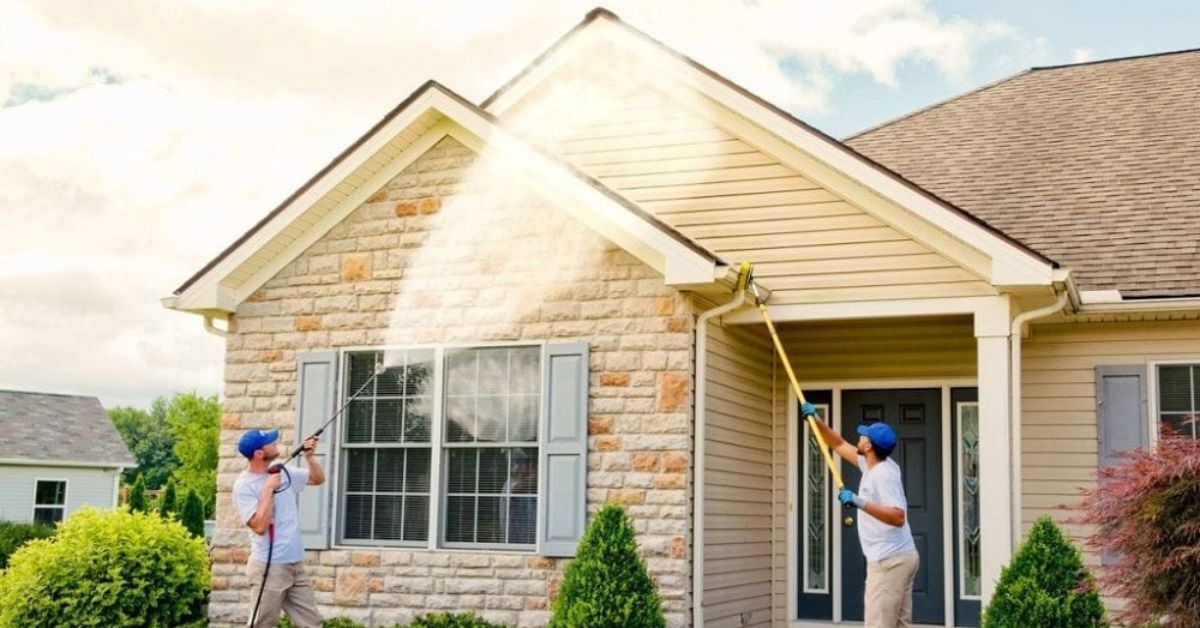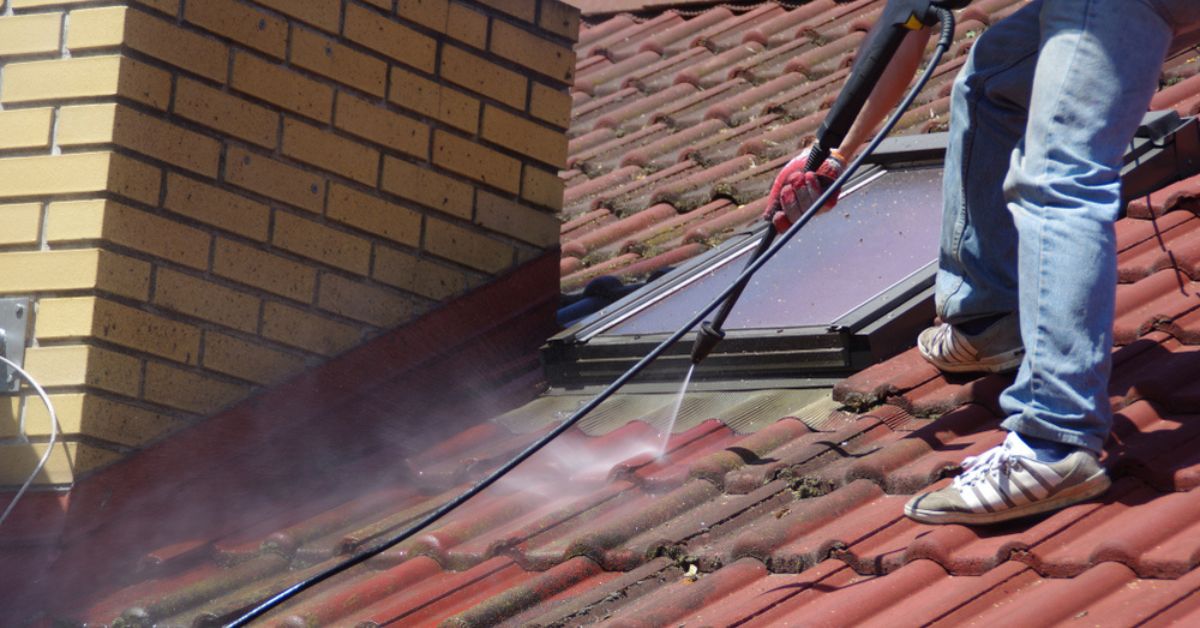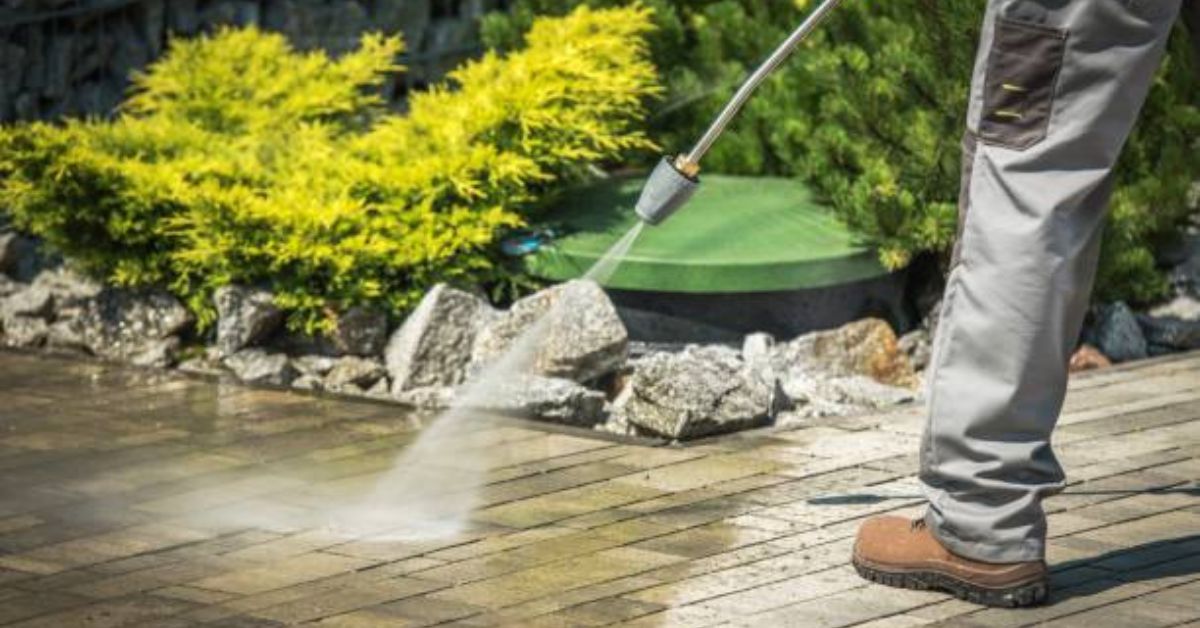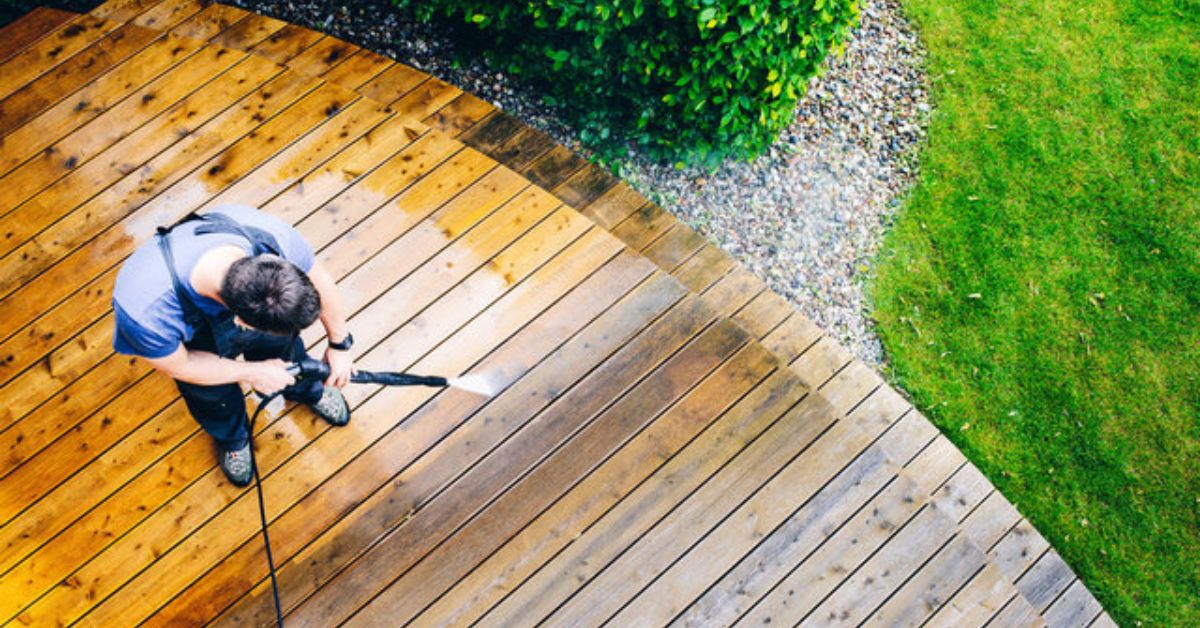When it comes to washing a roof, you’ll be questioning if power washing or pressure washing is the suitable alternative. Both methods have their pros and cons, so it’s important to understand which one is more appropriate for your roof’s particular desires.
In order to make a choice about which technique is satisfactory for your roof washing services, it is crucial to bear in mind factors which includes the form of material your roof is made of, the extent of dirt and grime present, and the ability risks related to each cleaning method.
By weighing these factors, you can decide whether power washing or pressure washing is the better for retaining the cleanliness and integrity of your roof.
In this blog, we’ll discover the differences between power and pressure washing, and it will serve as a roof cleaning guide for you!
Techniques of Power Washing & Roof Pressure Washing
Before delving into which technique is preferable for your roof, let’s first clarify the differences between power and pressure washing.
While each process involves high-strain water, power washing uses heated water for stronger cleaning electricity, and even pressure washing uses cold water.
This temperature difference influences their effectiveness on diverse surfaces and types of dust. Understanding these subtleties is essential to deciding the best technique for your unique cleaning requirements.
Roof Power Washing
- Power washing involves using hot water at excessive pressure to remove dust, dirt, and surface stains.
- It generally uses a mixture of excessive pressure and heated water, making it powerful for tackling difficult stains and cussed particles.
- The warmth helps to break down contaminants and kill mildew, mold, and bacteria more efficaciously than the water alone.
- Power washing is appropriate for surfaces that can withstand excessive temperatures and pressure, together with concrete driveways, sidewalks, and some styles of siding.
- Consider hiring a professional for large or complicated cleaning projects to ensure the most beneficial outcomes and reduce the threat of harm to surfaces.
- Power washing is regularly endorsed for surfaces with deep-seated stains or heavy layers of filth because the aggregate of warmth and pressure can penetrate and raise particles more effectively.
- It’s important to exercise caution when power washing delicate surfaces, including timber or certain styles of siding, because the excessive strain and heat can cause damage if not used properly.
Roof Pressure Washing
- Pressure washing utilizes water at high pressure to smooth surfaces efficiently.
- While it excels at eliminating surface dirt, dust, and particles, it may no longer be as powerful for deeply embedded stains or chronic mildew and mold.
- Pressure washing is a flexible cleaning approach that can be used on a wide range of surfaces, including wooden, vinyl siding, brick, concrete, and even motors.
- Compared to power washing, pressure washing is usually gentler on surfaces and much less likely to cause damage, making it suitable for more delicate substances and finishes.
- It’s crucial to regulate the roof pressure wash settings based totally on the cleaned floor to avoid causing harm or stripping away paint or defensive coatings.
- Consider using eco-friendly detergents or cleaners together with pressure washing to improve cleaning efficiency and reduce environmental impact.
- Regular preservation with pressure washing can help prevent the buildup of dust, algae, and dirt, extending the lifespan of surfaces and improving their appearance.
- For the most appropriate results, consider hiring home cleaning services, especially for large or more challenging cleaning areas. Professional cleaners have the know-how and gadgets to achieve advanced results while minimizing the hazard of harm to surfaces.
Which is Better for Your Roof?
When it comes to washing a roof, the choice between power washing and pressure washing depends on numerous elements, including the kind of roofing cloth, the volume of dirt and particle buildup, and any existing harm or vulnerabilities.
Maintaining the cleanliness of your roof is important for its sturdiness and overall look. Over time particles can accumulate to your roof, which is not good for the roof quality and appearance.
Power washing and pressure washing are each popular methods for casting off grime and buildup, however they range in terms of the amount of pressure and heat used in the course of the cleaning method.
Roof Power Washing for Tough Stains
If your roof is heavily stained with mildew or algae, or if you live in humid weather where these issues are common, power washing may be the better choice.
The combination of excessive pressure and hot water in power washing can efficiently kill and remove mildew and mildew spores, preventing them from regrowing.
Pressure Washing for Delicate Surfaces
Roof pressure wash manufactured from more delicate substances, such as asphalt shingles, cedar shakes, or clay tiles, pressure washing is often the more secure choice.
The lower pressure and cold water utilized in pressure washing are less likely to harm or dislodge roofing materials, keeping the integrity of the roof.
Consider Professional Expertise
Regardless of which technique you choose, it is important to exercise caution when cleaning your roof to avoid causing damage.
Hiring a professional for power wash roof cleaning ensures that the activity is completed appropriately and efficiently, with the correct equipment and information to address your precise roofing material and condition.
Roof Cleaning Guide According to Roofing Material
Roofing Material |
Power Wash Roof Cleaning |
Pressure Washing Roof Cleaning |
| Asphalt Shingles | – Effective for removing stubborn stains and algae | – Gentle enough to avoid damaging shingles |
| – Can be used with biodegradable cleaners | – Suitable for regular maintenance and light cleaning | |
| – Use caution to avoid excessive pressure and heat | – Adjust pressure to avoid dislodging shingles | |
| – Best for roofs in good condition with minimal damage | – Ideal for routine cleaning and dirt removal | |
| Metal | – Removes rust, mildew, and algae effectively | – Gentle enough to avoid scratching or denting metal |
| – Can be used with rust inhibitors for protection | – Adjust pressure for optimal cleaning without damage | |
| – Use caution to prevent denting or warping | – Suitable for removing light debris and dirt buildup | |
| – Best for metal roofs with moderate to heavy soiling | – Regular maintenance helps prevent corrosion | |
| Tile | – Effective for removing moss, mildew, and algae | – Gentle cleaning to avoid damaging fragile tiles |
| – Use low-pressure settings to avoid dislodging tiles | – Suitable for routine maintenance and light cleaning | |
| – Best for clay or concrete tiles in good condition | – Avoid high-pressure settings to prevent water damage | |
| – Apply biodegradable cleaners for better results | – Ideal for removing surface dirt and organic growth | |
| Slate | – Can be used with caution to remove stubborn stains | – Gentle cleaning to avoid damaging delicate slate |
| – Use low-pressure settings to prevent chipping or cracking | – Suitable for routine maintenance and light cleaning | |
| – Best for slate roofs with moderate dirt and grime | – Adjust pressure for optimal cleaning without damage | |
| – Test in inconspicuous areas before full application | – Regular maintenance helps preserve slate’s natural look |
Conclusion
There’s a nobody-size-suits-all solution in between power washing and pressure washing for cleaning your roof. Both techniques have their advantages and obstacles, depending on the type of roofing and the extent of cleaning required.
However, the exceptional preference ultimately depends on elements such as the sort of roof, the severity of dust buildup, and any current damage.
By comparing your roof’s circumstances and consulting with professionals, you could ensure efficient and secure cleaning while prolonging your roof’s lifespan.
Moreover, investing in daily roof preservation and cleaning is key to protecting your house’s structural integrity and maintaining its aesthetic appeal for years to come!







